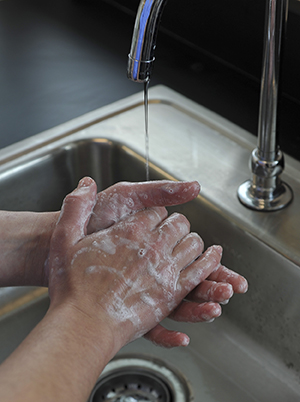Your body will need time to recover after surgery. You'll be given information about helping your body heal and what you can and can't do. You’ll be taught what problems to watch for.
Follow-up appointments will be made so your healthcare provider can check on you as you heal.
Moving forward, be sure to tell all your healthcare providers that you’ve had a mastectomy and on which side.
Wearing a prosthesis
If you didn't have breast reconstruction surgery, you may be given a short-term (temporary) prosthesis. This is a soft breast form that fits into a bra. Some women wear breast forms to help balance weight and reduce back strain. Other women wear them for appearance. Some women don't use them at all.
Talk with your healthcare provider if you want a prescription for a permanent prosthesis. Your provider will tell you when you've healed enough to be fitted for one and when to start wearing it.
Seroma
A seroma is a buildup of fluid where tissue was removed. Fluid might collect under your arm or under the incision. It can happen anytime after surgery. The spot will look swollen. You may be able to feel the liquid under your skin.
A small seroma is normal. Your body will likely absorb the liquid. It goes away by itself in a month or so. If you have a large seroma, your surgeon may drain (aspirate) it using a syringe and needle. A seroma can come back as you heal, so it may need to be drained again.
Your surgeon may place a drain with flexible tube in or near the incision. The tube is attached soft plastic bulb. This is used to collect fluid that occurs during healing and to prevent fluid from building up in the tissue where the surgery was done. If you go home with a drain, you will learn how to empty the bulb and care for the drain site.
Lymphedema
Swelling of the arm and chest on the side of surgery is normal right after surgery. But it should get better as you heal. Swelling that doesn't get better is called lymphedema. It can happen anytime after breast surgery, even many years later. Your hand on the treated side can also swell. Your arm may feel heavy.
Reducing the normal flow of lymph in the arm causes lymphedema. This can happen if lymph nodes under the arm are removed. Or it can happen if the underarm is treated with radiation therapy. Depending on the type of surgery and other treatments you get, you may be at risk for lymphedema for the rest of your life.
Talk with your treatment team about your risk for lymphedema and what you should do to decrease your chance of developing lymphedema. You can ask to meet with a specially trained lymphedema therapist to learn more. Once lymphedema happens, it can't be cured. Learn what you can do to help limit problems, such as:
-
Return to normal use of the arm on the side of the surgery as you heal.
-
Protect your hand and arm from infection. Wash your hands often. Wear gloves when cleaning or gardening. Use sunscreen and bug spray to prevent bug bites. Keep any scratches, cuts, or bug bites clean.
-
Keep the fluid moving in your arm on the treated side. Don’t wear tight sleeves or elastic cuffs. Wear loose bracelets, wristwatches, and rings on that arm.
-
Do the exercises you're given after surgery. They help prevent swelling and improve circulation. For example, you may be told to squeeze a rubber ball with your hand.
-
Don't have any blood draws on the affected side, if your healthcare provider tells you not to. They may also tell you not to have an IV or get a shot on the affected side. Not all providers agree with this recommendation. Ask your provider what they advise for you.
When to call your healthcare provider
Talk with your healthcare provider about problems you should watch for. Call right away if you have any of the following:
-
Fever of
100.4 °F (38 °C) or higher or as advised by your provider -
Chills
-
Cough or shortness of breath
-
Increased pain, warmth, swelling, or redness near the surgical site, or in an arm or leg
-
Drainage from the incision site
-
Edges of the incision site open or pull apart
-
Drain tubing falls out (if you go home with one)
-
Bleeding that soaks the bandage
-
Trouble urinating, pain or burning when urinating, or changes in the way your urine looks or smells
-
Swelling in your hand, arm, or chest that gets worse or isn't getting better a week or two after surgery
Know what number to call to get help after office hours, on weekends, and on holidays.
Featured in


